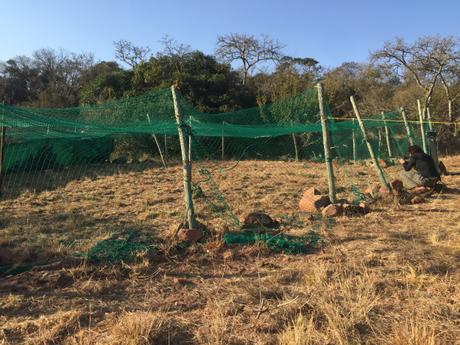
As you will have seen from the post on our recent publications, we have previously collared baboons here at the Primate and Predator Project. Female baboons were selected for collaring as they do not disperse from the group like males. Our objective was to compare the movement patterns of predators and the baboons and enhance our understanding of the baboons' landscape of fear. In order to detect predator-prey interactions, GPS collars equipped with proximity sensors designed to detect the UHF ID tags that were deployed on the resident baboon groups were deployed on leopards. Not all of these 'proximity' collars dropped off, however, and so we have been working to remove the final collars from the animals.
Two attempts were made in 2019 to remove collars that were no longer functioning. The PPP are fortunate to have a permanent large trap comprising cricket netting. We also set out four large cage traps. The big trap and the four cages are all manually closed by means of pulling a string which is attached to the doors. This is important since it means we only set off the trap when it contains the animals we are after.
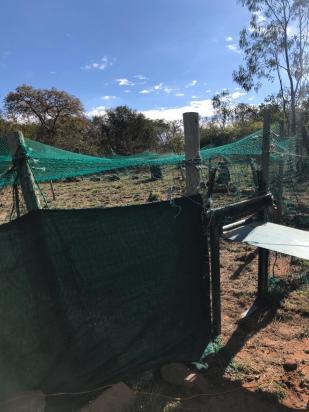
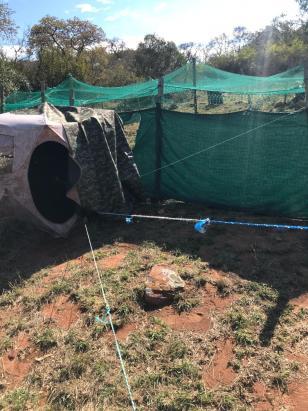
Trapping only takes place when we are fortunate enough to have a vet present on site. To prepare, we check that there are no holes in the trap, ensure the doors are running smoothly on the cage traps and pre-bait the entire area a few days before the actual capture. The area is pre-baited with corn to ensure that the group becomes habituated to coming inside the trap and cages. There are also two hides which are set up, one next to the big trap and one closer to the cages, for the people who are manning the traps to stay hidden. As we are dealing with smart creatures, we need to sit in the hides for the few days during pre-baiting, to ensure the baboons become habituated to the people's presence in the hides. These hides are small and can get extremely warm or extremely cold. They are not the most comfortable place to be sat for 4 hour sessions, twice daily, but such a privilege to be able to observe these creatures so close in their natural environment.
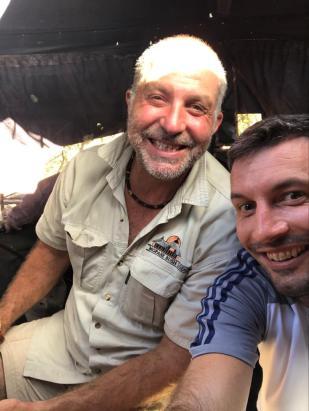

The baboon's movements and arrival at the trapping area are mostly dictated by sunrise and sunset and their chosen sleep site and its proximity to the site. Once the vet has arrived and we are ready to capture, mornings start at 04h40 to ensure that the traps and cages are set up and we are ready in the hides waiting for the baboons arrival. As the habituated group is so large, typically they arrive in waves of animals up until about 08h30. The afternoons capture sessions are started again at about 15h30 until sunset.
Once the baboons start to come into the area and traps, you need to be silent as some of the collared animals are subordinate females, so are slightly skittish and get chased off by the dominant males. The area gets incredibly busy once the baboons arrive due to the 'free' food; it has been so dry up on the mountain and so any food that is available is readily snatched up.
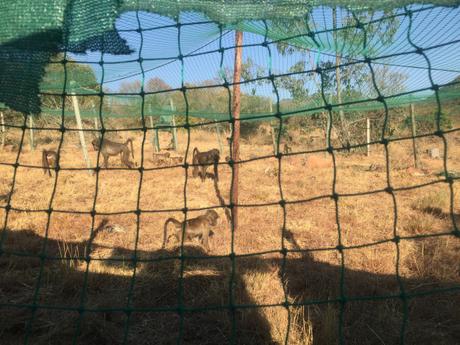
Decisions regarding whether to the close the trap are based on the presence of a target animal as well as the other animals present so as to minimize the potential stress and impact on animal welfare. Once the target animal is in a trap and the trap is triggered the vet darts the animal to sedate it. Once anaesthetized, the baboon's cheek pouches are emptied to prevent it choking on the corn it consumed. The animal and personnel working on the sedated animal are then covered using a tarpaulin to ensure that no other group members can see what is happening. Once the cheek pouches are checked, the vet ensures that the animal is stable and the collar is removed. This process takes about 5 minutes. Due to the drug interactions, about 20 minutes needs to be given before the animal is given the reversal drug. Once the animal is fully awake, it is released back into the group.
